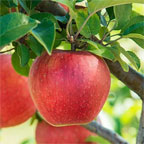- Q.Canary Island Palm - I bought two Canary Island palms. They are fab and one is perfect, but the other took on too much ...
- Q.How To Plant My Canary Oil Palm Tree And What Soil And Food To Feed ? - I have my tree in a pot and wonder how long I can keep it in pot . Will tree ...
- Q.Holes In Canary Palm Tree - We have a canary palm ( mature) that had a hole in it from possible red-fox tree squirrels. We put ...
- Q.Canary Island Palm Cultivation - I am an architecture student searching about palms for landscaping. I had some questions about cultivation of Canariensis palms and ...
- Q.My Tree Is Getting Holes In It- What’s Happening? - I have a canary island palm tree and it is getting holes in it . Separating apart! What does that ...
- Q.Canary Island Palm Trunk - I have a palm that is about 8-- feet tall and about 20" in diameter. On the bottom half of ...
- Q.My Pineapple Palm Plant Is A Small House Plant. The New Growth Has A Much Different Look. It Is Paler In Color And Is Much Large - r. Do you know how this has happened?
Q.Canary Island Palm
I bought two Canary Island palms. They are fab and one is perfect, but the other took on too much water with all the rain last year, so I cut it back into the bark. Now I feel that was too much for it. Would it grow again or have I managed to kill it? There is a fine bark left with substantially big base and roots and I have cut all the damp away. I was hoping I could save it somehow.
- A.
Hopefully, this article will help: https://www.gardeningknowhow.com/ornamental/trees/tgen/how-to-fix-girdled-trees.htm
Was this answer useful?00
Q.How to plant my canary oil palm tree and what soil and food to feed ?
I have my tree in a pot and wonder how long I can keep it in pot . Will tree get damaged ?
- A.
It's best to get your palm planted into the ground.
This link will help you.https://www.gardeningknowhow.com/ornamental/trees/canary-palm/canary-island-palm-trees.htm
Was this answer useful?00 Q.holes in canary palm tree
We have a canary palm ( mature) that had a hole in it from possible red-fox tree squirrels. We put chicken wire around it last year and what ever animal made another hole below the hole again this year. what can we do to save this beautiful tree.....help! San Dimas, Ca.
- A.
From the photos this appears to be a very extensive amount of decay in the trunk of the palm. I would be concerned about risk of fracture and structural failure at that point. The full foliar crown of a mature Canary Island Palm like that can weigh several hundred pounds and represent extreme risk to any underlying property targets or risk for personal injury if it were to break and fall.
No matter what the original cause of infection, wounding, tree climber spikes, chain saw cutting too deep into the pseudobark, I believe that the squirrels are secondary opportunists and not the cause.
Because of the way that palms (monocots) grow, there is no way that I can think of to stop the advance of the decay. Covering the holes will only stop invasive activity but not advance of fungal decay.
This is serious for you safety. You are very near the UCCooperative Extension in Alhambra where Don Hodel is based. He is maybe the top palm expert in the world and has done a lot of research on palm diseases. You may get a free inspection and advise because of UCCE public advisory services.
http://ucanr.edu/sites/HodelPalmsTrees/?facultyid=1022Was this answer useful?00 Q.Canary Island Palm Cultivation
I am an architecture student searching about palms for landscaping. I had some questions about cultivation of Canariensis palms and I would be grateful if you respond my questions. 1. About off-site cultivation and then moving palms to the main site, how long it takes for the tree to extend its roots to gain enough stability? 2. Is it possible to move adult tall palms (more than 10 m) to the site? 3. Is palm stable enough to build a treehouse connected to its trunk? Thank you so much in advance for your attention Best regards
- A.
Your questions are so specific to your locale and conditions, it would be best to contact someone from a local agricultural extension service, or discuss the questions with a certified arborist in your area.
Here's an article on Canary Island palms that may be helpful:
https://www.gardeningknowhow.com/ornamental/trees/canary-palm/canary-island-palm-trees.htmWas this answer useful?00 Q.My Tree Is Getting Holes In It- What’s Happening?
I have a canary island palm tree and it is getting holes in it . Separating apart! What does that mean?
- A.
I hope it is not a palm weevil. Here is more:
https://ucanr.edu/blogs/blogcore/postdetail.cfm?postnum=26668
https://edis.ifas.ufl.edu/publication/st439
https://www.gardeningknowhow.com/ornamental/trees/canary-palm/canary-island-palm-trees.htm
Was this answer useful?00 Q.Canary Island Palm Trunk
I have a palm that is about 8-- feet tall and about 20" in diameter. On the bottom half of the trunk, the cut pieces of the branches are falling off, appearing to be rotten. I have talked to a local nursery, which didn"t know much about this tree, and they said that there might be a bug infestation. I treated the ground with a drench. The trunk is solid, I checked with a screwdriver. Is this normal? Can I strip off the remaining cut pieces and debris from the bottom half?
- A.
I'm not clear on why there are "cut pieces". You may have weevil damage. Here is more:
https://www.gardeningknowhow.com/ornamental/trees/canary-palm/canary-island-palm-trees.htm
https://edis.ifas.ufl.edu/publication/st439
https://www.gardeningknowhow.com/ornamental/trees/palms-trees/palms-with-pink-rot-fungus.htm
https://www.gardeningknowhow.com/ornamental/trees/palms-trees/ganoderma-in-palms.htm
https://www.gardeningknowhow.com/ornamental/trees/palms-trees/palm-tree-planting-outdoors.htmWas this answer useful?00 Q.My Pineapple Palm Plant Is A Small House Plant. The New Growth Has A Much Different Look. It Is Paler In Color And Is Much Large
r. Do you know how this has happened?
- A.
This sounds like a drastic negative reaction to environment. These palms do not usually clump, or grow in groups. This stress can be brought about by over and under watering, nutrient deficiency, constricted roots, lack of sunlight, and more.
The larger leafs and lighter color leads me to believe that your original palm will soon begin to die off. The pup can be replanted, however. It color issue can be a sign of lack of light.
I would advise trying to save the original by transplanting. When transplanting a Canary Island Date Palm, avoid cutting its roots indiscriminately as palms are sensitive to root disturbance. Gently separate circling or girdling roots, trim any damaged roots, and inspect the root ball for pot-bound issues. Choose a slightly larger container with drainage holes, water the palm before transplanting, and minimize root disturbance during the process. Monitor the palm for signs of stress and provide proper care to facilitate recovery after transplanting.
This article will give you information on the care that it would receive in nature. This will give you a good idea of what it would need indoors.
https://www.gardeningknowhow.com/ornamental/trees/canary-palm/canary-island-palm-trees.htm
Was this answer useful?00



